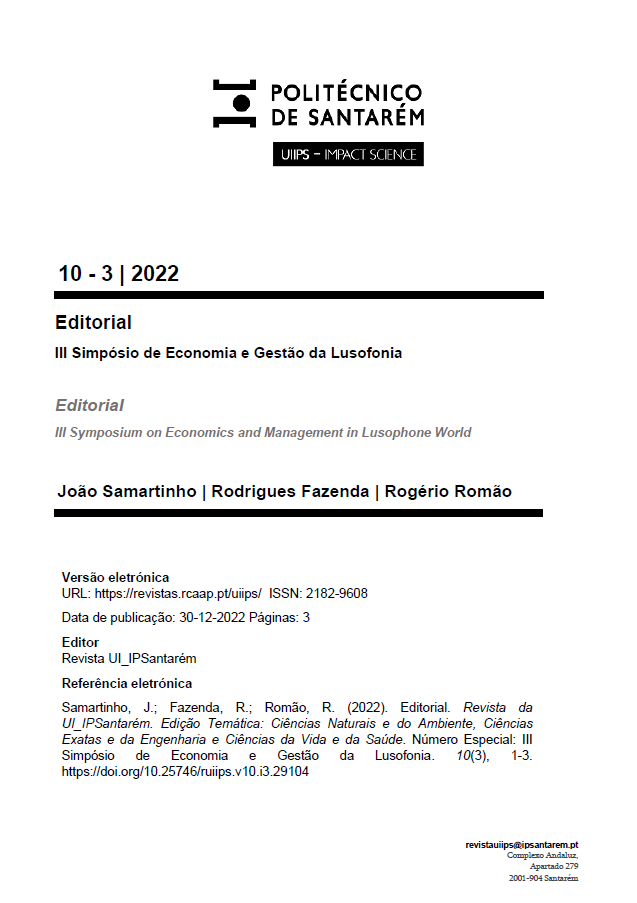Avaliação da Qualidade de Água da Barragem do Alto Muda para Consumo Humano no Distrito de Gondola – Província de Manica
Ciências Naturais e do Ambiente
DOI:
https://doi.org/10.25746/ruiips.v10.i3.29118Palavras-chave:
Barragem, Avaliação, Qualidade, ÁguaResumo
O objetivo deste artigo foi de avaliar a qualidade de água da barragem do Alto Muda para o consumo humano na vila municipal de Gondola. Foram analisados 8 parâmetros, a saber: temperatura da água, turbidez, condutividade elétrica, oxigénio dissolvido, pH, cloreto (Cl-), ferro (Fe2+) e coliformes Termo tolerantes, dos quais a turbidez com nível alto de 73,9 NTU no ponto P01, o ferro com teor alto de 0,64 mg/L no ponto P01 e os coliformes Termo tolerantes com 880,00 NMP/100ml no ponto P02, facto que se deve a ação antrópica acentuada nestes pontos como, o despejo de efluentes, contaminação por esgotos domésticos e material fecal. O Diploma Ministerial 180/2004 do MISAU[1] e o Guidelines for Drinking Water Quality, segundo a OMS (2004), recomendam limites máximo admissível para água do consumo humano até 5 NTU para a turbidez, 0,3 mg/L para o ferro (Fe2+) e 0 ausência de coliformes Termo tolerantes em NMP/100ml de água. Os dois instrumentos de avaliação dos padrões de potabilidade da água para o consumo humano (Diploma 180/2004 do MISAU e o guião da OMS), não mencionam a temperatura e o oxigénio dissolvido como parâmetros que participam na qualificação da água potável, apesar da sua importância para um melhor ambiente aquático. Os resultados obtidos neste artigo, permitiram concluir que a água da barragem do Alto Muda de uma forma geral não pode ser considerada potável devido ao alto teor de turbidez, ferro e coliformes termo tolerantes.
Downloads
Publicado
Como Citar
Edição
Secção
Licença
Direitos de Autor (c) 2022 Horacio Alberto Vilanculos

Este trabalho encontra-se publicado com a Licença Internacional Creative Commons Atribuição-NãoComercial-SemDerivações 4.0.
Autores que publicam nesta revista concordam com os seguintes termos:
- Autores conservam os direitos de autor e concedem à revista o direito de primeira publicação, com o artigo simultaneamente licenciado sob a Licença Creative Commons Attribution que permite a partilha do trabalho com reconhecimento da autoria e publicação inicial nesta revista.
- Autores têm autorização para assumir contratos adicionais separadamente, para distribuição não-exclusiva da versão do artigo publicado nesta revista (ex.: publicar em repositório institucional ou como capítulo de livro), com reconhecimento de autoria e publicação inicial nesta revista.
- Autores têm permissão e são estimulados a publicar e distribuir o seu trabalho online (ex.: em repositórios institucionais ou na sua página pessoal) a qualquer ponto antes ou durante o processo editorial, já que isso pode gerar alterações produtivas, bem como aumentar o impacto e a citação do trabalho publicado.



